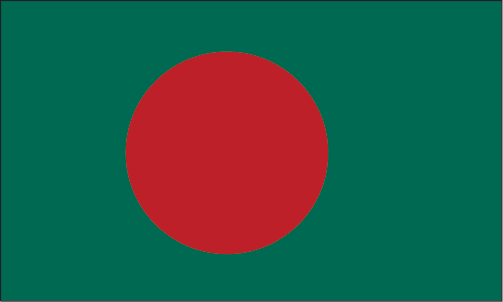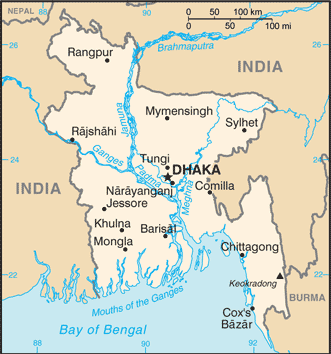History of Bangladesh


Modern Bangladesh emerged as an independent nation in 1971 after breaking away and achieving independence from Pakistan in the Bangladesh Liberation War. The country's borders coincide with the major portion of the ancient and historic region of Bengal in the eastern part of the Indian subcontinent, where civilisation dates back over four millennia, to the Chalcolithic. The history of the region is closely intertwined with the history of Bengal and the history of India.The area's early history featured a succession of Indian empires, internal squabbling, and a tussle between Hinduism and Buddhism for dominance. Islam became dominant gradually since the 13th century when Sunni missionaries such as Shah Jalal arrived. Later, Muslim rulers reinforced the process of conversion by building masjid (mosques) and madrassas. From the 13th century onward, the region was controlled by the Bengal Sultanate. Afterwards, the region came under the suzerainty of the Mughal Empire, as its wealthiest province. Bengal Subah generated 50% of the empire's GDP and 12% of the world's GDP,[1] globally dominant in industries such as textile manufacturing and shipbuilding,[2][3][4] with the capital city Dhaka having a population exceeding a million people.Following the decline of the Mughal Empire in the early 1700s, Bengal became a semi-independent state under the Nawabs of Bengal, before it was conquered by the British East India Company at the Battle of Plassey in 1757, directly contributing to the Industrial Revolution in Britain[2][3][4][5] (such as textile manufacture during the Industrial Revolution), and to deindustrialization and famines in Bengal.[2][3][4] The Bengali city of Calcutta served as the capital city of British India up until the early 20th century. From the late 19th century to the early 20th century, the region experienced the Bengal Renaissance.The borders of modern Bangladesh were established with the partition of Bengal and India in August 1947, when the region became East Pakistan as a part of the newly formed State of Pakistan following the Radcliffe Line.[6] However, it was separated from West Pakistan by 1,600 km (994 mi) of Indian territory. Due to political exclusion, ethnic and linguistic discrimination, as well as economic neglect by the politically dominant western-wing, popular agitation and civil disobedience led to the war of independence in 1971. After independence, the new state endured famine, natural disasters, and widespread poverty, as well as political turmoil and military coups. The restoration of democracy in 1991 has been followed by relative calm and rapid economic progress. Bangladesh is today a major manufacturer in the global textile industry.